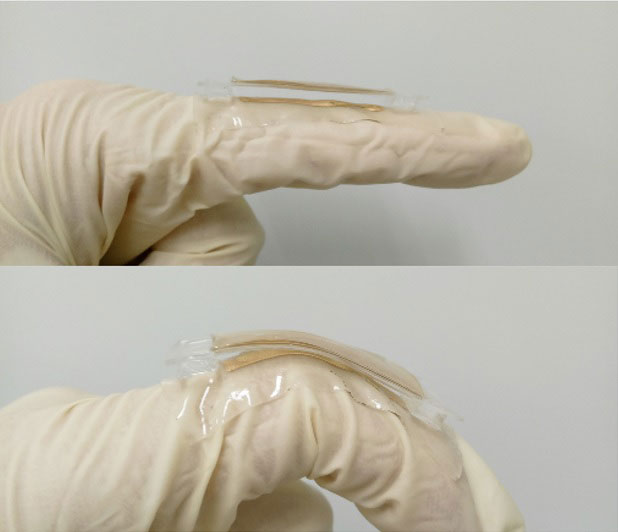
Gold tab attached to skin converts mechanical energy into juice for wearable’s, self-powered electronics. Searching for a power outlet may soon become a thing of the past.
Devices will receive electricity from a small metallic tab called Triboelectric Nano generator, when attached to the human body. Generators are capable of generating electricity from such simple movements of body like bending a finger.
A project of Tab (Triboelectric Nanogenerator) is led by University at Buffalo and Institute of Semiconductors (IoP) at Chinese Academy of Science (CAS). A paper is published online on jan 31 in the journal Nano Energy over the idea- Triboelectric Nanogenerator.
“No one likes being tethered to a power outlet or lugging around a portable charger. The human body is an abundant source of energy. We thought: ‘Why not harness it to produce our own power?’” says lead author Qiaoqiang Gan, PhD, associate professor of electrical engineering in UB’s School of Engineering and Applied Sciences.
Triboelectric charges when a material gets electrically charged after coming into contact with a different material. Every day’s Static electricity is Triboelectric. The researchers developed such nanogenerators that utilize the triboelectric effect. The UB and CAS team are manufacturing Tab with simple lithography and it’s also cost effective.
Tab consists of two thin layers of gold, sandwiched with polydimethylsiloxane (also called PDMS, a silicon-based polymer used in contact lenses, Silly Putty and other products). Key to the device is that one layer of gold is stretched which cause it to squash upon release and create what looks like a miniature mountain range. When the force is applied again, the motion leads to friction between the gold layers and PDMS.
“This causes electrons to flow back and forth between the gold layers. The more friction, the greater the amount of power is produced,” says another lead author, Yun Xu, PhD, professor of IoP at CAS.
“No one likes being tethered to a power outlet or lugging around a portable charger. The human body is an abundant source of energy. We thought: ‘Why not harness it to produce our own power?” says Qiaoqiang Gan, associate professor of Department of Electrical Engineering.
The study says that it can generate 124volts of maximum voltage with 10 microamps of current and a maximum power of 0.22 miliwatts per square centmeters. The voltage is not enough to charge a smart phones but it can glow 48 LEDs lights simultaneously. Co-authors of the study include Huamin Chen at IoP and CAS; and Nan Zhang, a PhD student at UB.
A team of UB undergraduates lead by Zhang, tasked with improving the tab’s performance, because of the tab is easily fabricated. The team plans for using a large piece of gold to generate electricity.
The researcher team is also working over developing of a portable battery to store the energy generated by the tab. They visualized the system as a power source for different wearable and self-powered electronic devices.
The research is supported by the U.S. National Science Foundation, the National Basic Research Program of China, National Natural Science Foundation of China, Beijing Science and Technology Projects, Key Research Projects of the Frontier Science of the Chinese Academy of Sciences and National Key Research and Development Plan.

